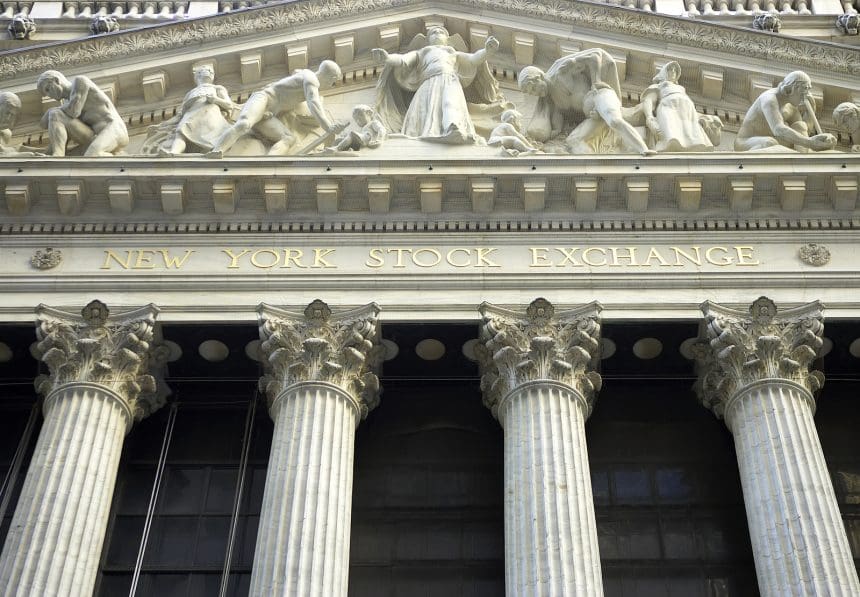US Financial Markets Mixed as Tech Weakness Weighs on Nasdaq, Commodities Show Resilience
ST. LOUIS, MO (STL.News) US Financial Markets – US financial markets delivered a mixed performance on Wednesday, August 20, 2025, as investors balanced a tech-sector selloff, mixed retail earnings, and anticipation of policy guidance from the Federal Reserve’s Jackson Hole symposium. While the S&P 500 and Nasdaq Composite retreated, the Dow Jones Industrial Average managed to post modest gains, underscoring a divergence between growth-heavy technology stocks and more traditional blue-chip names. Commodities markets, meanwhile, were supported by firmer crude oil prices and renewed interest in precious metals.
US Financial Markets – Broad Market Overview
Equity markets experienced notable swings throughout the session. The S&P 500, widely regarded as the best representation of U.S. large-cap equities, slipped around 0.2% by the closing bell. The Nasdaq Composite, dominated by technology and growth names, fell more sharply, losing approximately 0.7%. In contrast, the Dow Jones Industrial Average eked out a gain of roughly 0.1–0.2%, with strength in select consumer and industrial stocks offsetting weakness in other sectors.
Trading volumes were elevated as investors positioned ahead of remarks from Federal Reserve Chair Jerome Powell, who is expected to deliver a closely watched speech at Jackson Hole later this week. Market participants are keen for clues about the Fed’s outlook on interest rates, with speculation mounting over a potential cut in September.
US Financial Markets – Technology Sector Under Pressure
Technology stocks were the biggest drag on the markets on Wednesday. Heavyweight Nvidia, which has been a poster child of the artificial intelligence boom, saw sharp intraday declines before paring some of its losses. Palantir Technologies also dropped on investor concerns that AI valuations had outpaced fundamentals.
Analysts cited growing unease that government intervention—particularly in the semiconductor and AI industries—could slow growth or reduce profit margins. The selloff echoed warnings from some market strategists that the tech rally has entered “bubble-like” territory.
The Invesco QQQ Trust (QQQ), which tracks the Nasdaq-100 index, slipped more than 0.5%, while the SPDR S&P 500 ETF (SPY) closed marginally lower. In contrast, the SPDR Dow Jones Industrial Average ETF (DIA) ended modestly higher, highlighting the rotation into more defensive, dividend-paying stocks.
US Financial Markets – Retail Earnings Deliver Mixed Results
Another major theme today was the release of retail earnings. The sector produced a split scoreboard, underscoring the challenges and opportunities faced by consumer-facing businesses amid shifting spending habits.
- Lowe’s (LOW) surged more than 3% after posting strong quarterly results, boosted by robust demand in home improvement and a strategic acquisition announcement.
- TJX Companies (TJX) climbed about 3.5% after reporting better-than-expected same-store sales, fueled by consumer appetite for discounted apparel and household goods.
- Target (TGT), however, stumbled between 5–11% after the surprise announcement that its CEO would retire. Weak earnings guidance also rattled investors, who remain wary of competition and margin pressures.
- La-Z-Boy (LZB) shares declined on a soft outlook, indicating ongoing challenges in the furniture industry as higher borrowing costs weigh on discretionary spending.
The diverging results reflected broader questions about consumer resilience. While discount retailers and home improvement chains are showing strength, department stores and specialty retailers are struggling to maintain momentum in an uncertain environment.
US Financial Markets – Macro Environment: Fed in Focus
Investor sentiment remains highly sensitive to central bank policy. The Federal Reserve has signaled caution in recent months, striking a balance between signs of slowing inflation and concerns about economic stability. The market is now pricing in the possibility of a rate cut as early as next month, though Fed officials have not confirmed such a move.
Chair Jerome Powell’s upcoming remarks at Jackson Hole (August 21–23) are expected to provide key guidance. Traders are eager to see whether the Fed prioritizes stimulating growth or continues to emphasize inflation control.
Treasury yields held steady, with the 10-year note hovering near recent levels, suggesting investors are awaiting more clarity before repositioning. The dollar index showed modest weakness, reflecting anticipation of looser monetary conditions.
US Financial Markets – Commodities Markets: Oil, Gold, and Metals
While equities were mixed, the commodities complex demonstrated resilience.
Crude Oil – US Financial Markets
Oil prices climbed modestly, supported by geopolitical tensions and expectations of tighter supply. Brent crude traded around $67 per barrel, while West Texas Intermediate (WTI) hovered near $63. Gains of 1–1.5% were reported across benchmarks.
Traders cited ongoing uncertainty in Eastern Europe, where the Russia-Ukraine conflict continues to influence supply routes. Additionally, speculation about adjustments to sanctions policy has injected volatility into energy markets.
Gold and Precious Metals – US Financial Markets
Gold prices fluctuated but remained elevated, ranging from $3,320 to $3,350 per ounce. Investor interest in safe-haven assets was evident, particularly given concerns about tech volatility and the Fed’s uncertain policy path.
Other metals also posted gains:
- Platinum rose about 2.7%.
- Silver advanced more than 1.4%.
- Copper, an economic bellwether, slipped slightly but held near recent highs, reflecting cautious optimism about industrial demand.
Energy Products – US Financial Markets
Energy-related commodities such as heating oil and RBOB gasoline futures registered gains of 1–2%. Stronger demand expectations heading into the late summer driving season provided support.
US Financial Markets – Sector Highlights
- Energy stocks benefited from the uptick in oil prices, with integrated majors and exploration firms posting modest gains.
- Financials remained stable as banks continued to enjoy improved net interest margins, though the potential for Fed easing has capped upside momentum.
- Healthcare and consumer staples attracted defensive inflows as investors sought stability amid weakness in the tech sector.
US Financial Markets – Global Context
Internationally, markets mirrored Wall Street’s cautious tone. European indices closed lower due to concerns about U.S. tech valuations and upcoming Federal Reserve policy moves. Asian markets were mixed, with China under pressure from ongoing property sector concerns, while Japan’s Nikkei held steady.
The interplay between global macroeconomic forces, U.S. tech valuations, and commodities pricing has reinforced the interconnected nature of financial markets. With central bank policies in focus worldwide, volatility is expected to remain elevated in the short term.
Looking Ahead at the US Financial Markets
Investors are now bracing for Thursday’s session, which will feature early commentary from central bankers at Jackson Hole. Any hint of an upcoming rate cut could spark a rebound in growth sectors, particularly technology. Conversely, a hawkish tone could extend the recent rotation into defensive and cyclical plays.
Retail earnings will remain in focus, with additional reports expected from specialty chains and department stores. Energy traders will continue to monitor geopolitical developments for signs of potential supply disruptions, while gold watchers will assess whether safe-haven demand sustains its current momentum.
Conclusion of the US Financial Markets
Wednesday’s trading session underscored the fragile balance between optimism and caution in U.S. financial markets. The Nasdaq’s decline highlighted the risks of concentrated bets in technology, while the Dow’s modest advance reflected investor rotation into steadier names. Meanwhile, the commodities complex showed resilience, with oil, gold, and industrial metals drawing support from geopolitical uncertainty and defensive positioning.
As markets await clarity from the Federal Reserve, volatility is likely to persist. For now, the day’s results provide a snapshot of an economy and market caught between the promise of growth and the reality of policy and valuation risks.
The coming days, especially with Powell’s remarks at Jackson Hole, may set the tone for the remainder of the quarter and determine whether U.S. markets sustain their resilience or face deeper corrections.
© 2025 STL.News/St. Louis Media, LLC. All Rights Reserved. Content may not be republished or redistributed without express written approval. Portions or all of our content may have been created with the assistance of AI technologies, like Gemini or ChatGPT, and are reviewed by our human editorial team. For the latest news, head to STL.News.










